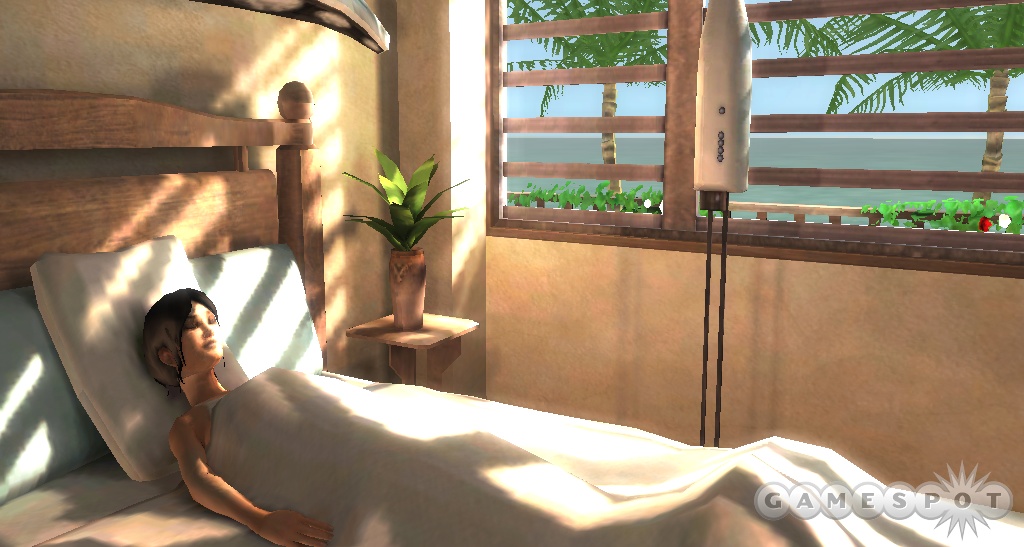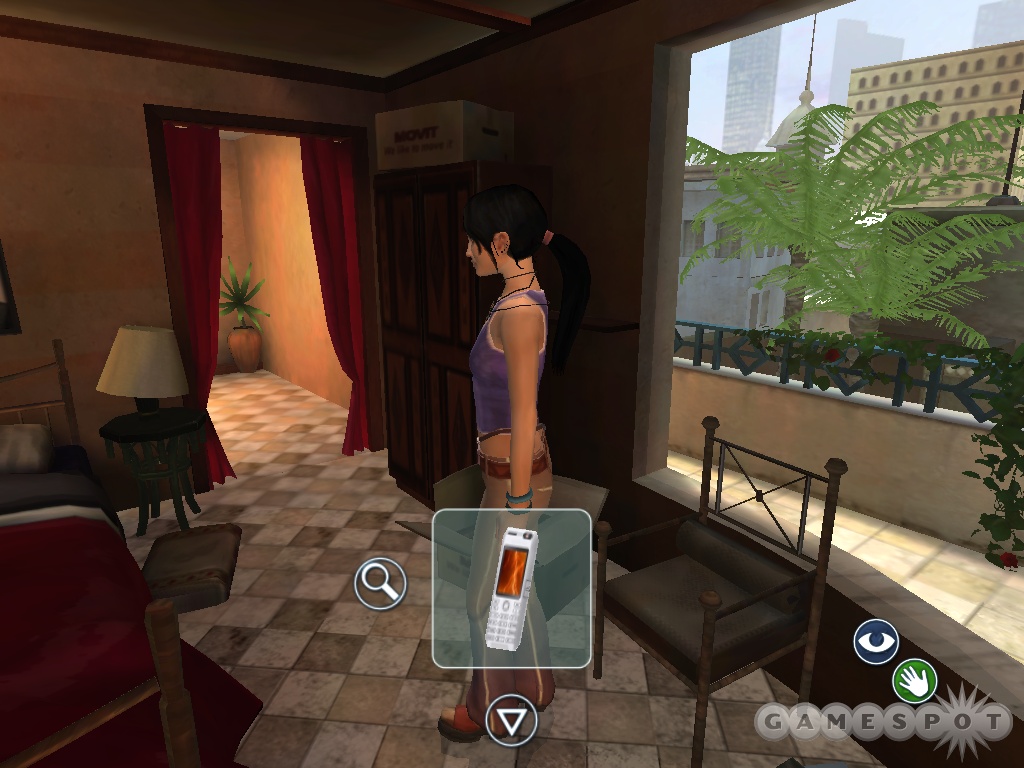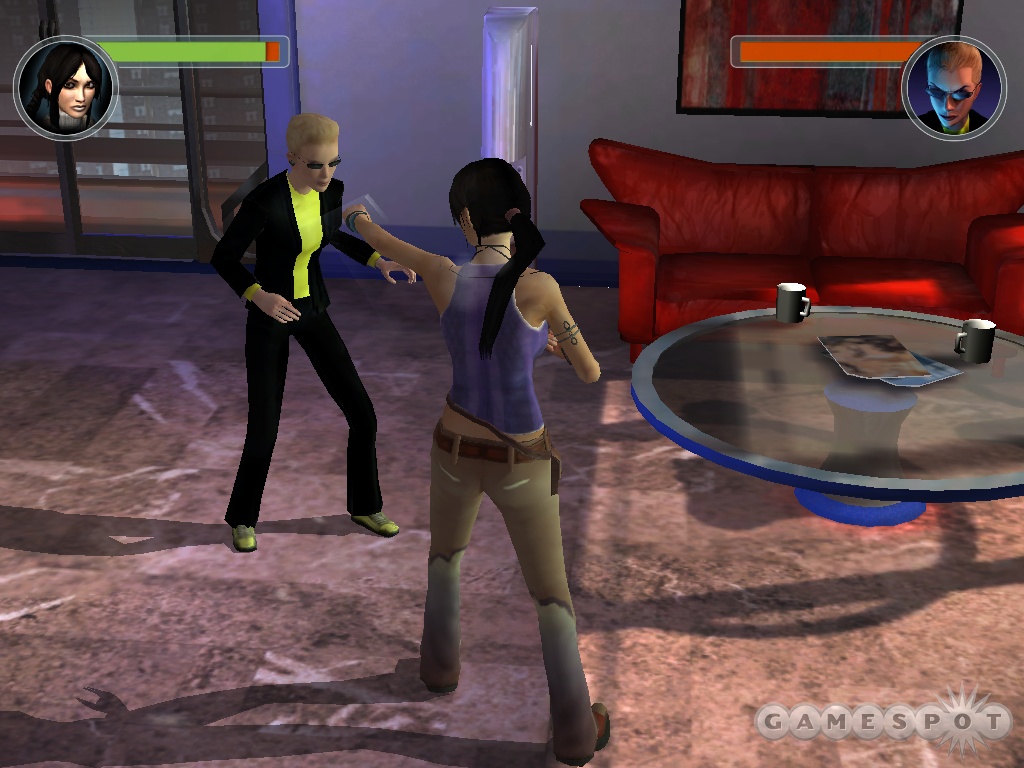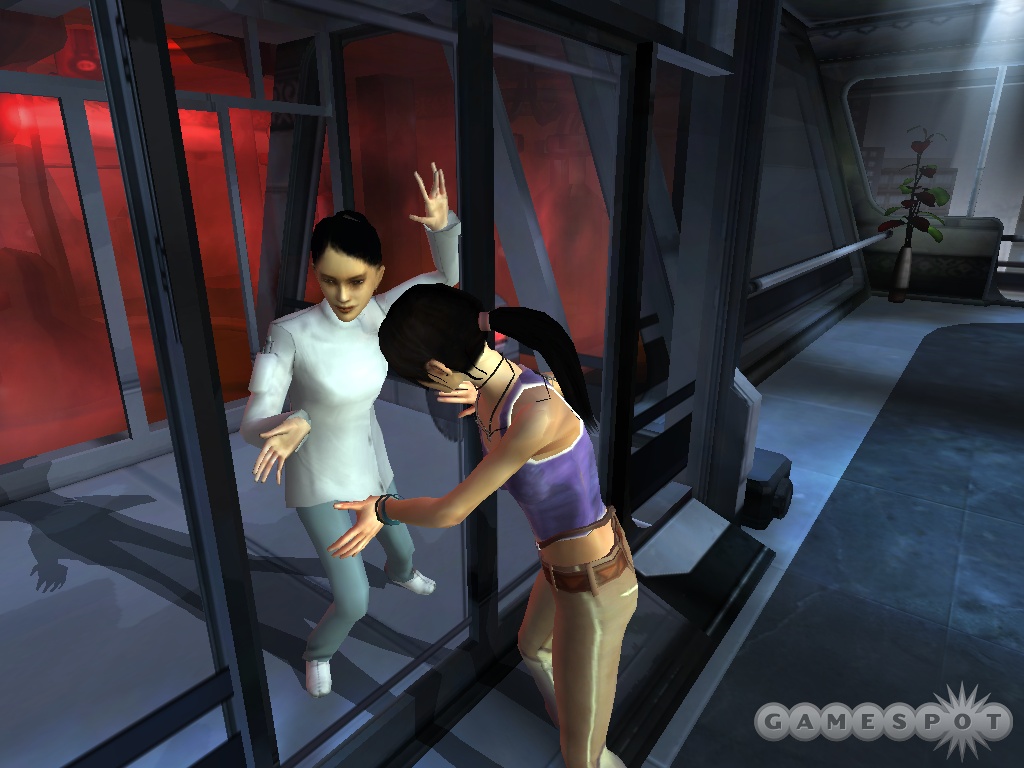Dreamfall: The Longest Journey Updated Impressions - The Beginning of the Story
We finally take a look at the spiritual successor to the highly acclaimed The Longest Journey. Exclusive first footage and first developer video interview inside.
SAN FRANCISCO--Norwegian studio Funcom created what many adventure game fans consider to be a classic in The Longest Journey back in 2000. But the successor to that acclaimed game won't be the traditional point-and-click adventure game its forebear was. The developer is purposely attempting to make a game that's different from most others on the market. Designer Ragnar Tornquist explained that he finds it difficult to classify Dreamfall: The Longest Journey within any standard game genre and that, frankly, this doesn't bother him one bit. In fact, the designer likens the game--which will combine elements of adventure games, stealth games, and third-person combat--less to a traditional adventure game and more to a page-turning "thriller" novel, especially since the game will emphasize its multilayered story and characters.

While we were shown only a few brief sequences from an early part of the game, we were able to get some idea of what the developer is trying to create. An early part of the game begins with Zoe Castillo, the game's primary protagonist, lying in bed on a sunny day in a futuristic version of the Moroccan city of Casablanca. Sunlight streams through the windows past her watchful father, who, after the death of Zoe's mother, has only his daughter left. There's only one problem: Zoe has, for whatever reason, ended up in a coma. This opening sequence is narrated by Zoe herself, who suggests that the only way she could be communicating with you, the player, might be because she's having an out-of-body experience and who explains that the world is in terrible danger, especially since everyone else who could have helped prevent the impending danger is already dead.
After this cryptic introduction, the game flashes back about two weeks to a time when Zoe was more conscious, but just as confused. Zoe, much like April Ryan from The Longest Journey, begins her adventures as a young adult who isn't really sure what to do with herself. A former student in Casablanca's thriving Capetown University bioengineering program, Zoe recently dropped out of school, broke up with her boyfriend, and now lives with her father in the wealthy and relatively safe town, whose local economy is built on advanced biotechnology and a rather loose interpretation of the law. And even more strange, she has started to see things--most specifically, a black-and-white picture of a small girl who whispers only, "find her, save her," and seems to appear in every TV and computer monitor Zoe looks in. At the beginning of the game, Zoe is convinced that the apparition is the result of either a viral marketing campaign or a dropping signal generated by "static," the effects of solar winds on the worldwide wireless network. As Zoe wakes up, she finds that her mobile phone is ringing--the object will act in the game as a sort of quest log that keeps track of where she needs to go next.
The game will also have a traditional (but minimalist) inventory for items you pick up...and very little else in terms of an interface. Tornquist explained that the game is attempting to be both highly cinematic and more accessible to a wider audience, so as a result, it won't have any huge opaque windows cluttering up the screen. Much of the game's interaction will take place using the "focus field," a narrow beam of light that emits from your character and lets you interact with whatever it falls on, such as an item you can use or a character you can talk to. This interface seems to work quite well with an Xbox controller and may very well be the answer to how to create a good point-and-click interface equivalent on consoles.

Once you've targeted an object, you may then have a choice of ways to interact with your target. These will be shown onscreen, not as big long lines of dialogue to read through and choose from but as brief text cues in a radial menu, which have a text explanation at the bottom of the screen. In a dialogue, it's assumed that your character has said something that corresponds with whichever option you've chosen to move the conversation along.
We watched as Zoe descended the stairs to speak to her father, who makes it clear that he's concerned about his daughter's recent decision to abandon her degree. While this kind of buildup of Zoe's character might seem out of place for a game, Tornquist explained that the game will attempt to flesh out its characters before they're thrown into the action. The designer pointed out that by the end of the early part of the game, players will have met not only Zoe, but also her father, her best friend, and her ex-boyfriend, and they will hopefully understand her motivations better before tossing her into action.
An Even Longer Journey?
"Action" for Zoe includes wandering the sunny streets of Casablanca, where her friend Olivia runs an underground hacker shop (complete with boxed copies of The Longest Journey on the shelves). Apparently, Zoe's good friend loves challenging herself with trying to bypass The Wire, which is, according to the game, what the Internet evolves into in a few centuries--an all-seeing, all-encompassing wireless network to which everything is attached. Olivia has hacked together a cloaking device that shields Zoe's cell phone from The Wire--an ability that will apparently come in very handy later on.

While, in the early level, Zoe is running late for her self-defense class at the gym (about the only thing she does these days besides hanging out at cafes), she gets a call from her ex-boyfriend, an investigative journalist who has a dangerous hobby of looking for behind-the-scenes stories that blow the lid off of big-money corporate scandals. Our heroine gets a job to pick up a package at a company building downtown and meets a secretary who claims that the contact Zoe was scheduled to meet is unavailable--but at that moment, the monitor behind the secretary shows a person who could be the contact, apparently trapped someplace and trying to get out. You can leave the scene, attempt to distract the secretary, or point the secretary to the scene on the monitor. Doing the latter causes the secretary, who has apparently been instructed to keep everything a secret, to leap over her desk and engage Zoe in hand-to-hand combat.
When in combat, the game screen updates to show small bars that indicate each character's remaining health, similar to a traditional fighting game. Zoe knows how to throw some punches, having studied self-defense, but she's no prize fighter, and she can apparently complete all her adventures without throwing a single punch if she instead relies on reasoning with key characters and sneaking past those that won't listen to reason. Tornquist explains that the game's combat is intended to be very physical and very visceral--and in Zoe's case, it may be something you'll want to avoid altogether (though some of the other characters will be much more proficient in battle).
After vanquishing the receptionist, our heroine finds her way to a back room where a mysterious man has just blown the lock on a glass chamber containing the trapped woman. He runs past her and escapes, and it's up to Zoe to save her contact, who is in danger of dying from the noxious gas leaking into her chamber. Unable to open the jammed door, Zoe notices that her contact keeps pointing at the ceiling of her soundproof cell--this is the clue Zoe needs to clamber atop a nearby booth and release a hidden valve that manually opens the cell. As her contact staggers out of what could have been her tomb, Zoe learns that she might be mixed up in something much larger than delivery jobs. This becomes even more apparent when she visits the apartment of her ex-boyfriend. The front door is ajar, and as Zoe enters, she finds that the place has been torn apart with no sign of her former beau, until she finds a corpse lying behind the couch. Suddenly, the TV screen comes to life and again shows the mysterious little girl--then cuts to a live feed of the riot commandos who are scrambling up the stairs to the apartment.

In what Tornquist refers to as a "set piece," Zoe is faced with a scene in which the outcome is more or less fixed. That is, there's no real way for her to escape the highly efficient soldiers and their sonic stun guns, but if she chooses to try to confront them or to openly surrender, she'll simply be apprehended. If she chooses to try to hide nearby, she'll actually be able to overhear bits of information that may come in handy later. Even though the game will have a mostly linear structure in the interests of telling a strong story, it will still have many hidden bits of information and secrets that you'll be able to find by looking carefully and examining your surroundings. Tornquist explained that the game is intended to have a "complex and multilayered story," and he hopes that players will be encouraged to play through the game more than once, since there will be bits and pieces of story, and specific explanations, that players may miss their first time around.
Dreamfall already comes across as a very promising game with beautiful environments and dialogue that seems every bit as snappy as that of The Longest Journey. The new game's added emphasis on story, character development, and personality (through the use of character and facial animations, rather than relying on line after line of pure text dialogue) seems like it will go a long way toward contributing to the game's cinematic look and feel. Dreamfall: The Longest Journey is scheduled for release later this year.
Got a news tip or want to contact us directly? Email news@gamespot.com
Join the conversation